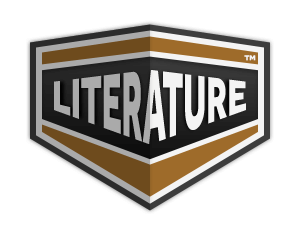The Union Buries Its Dead
"The Union Buries Its Dead" is a short story by Australian writer Henry Lawson, published in 1901. Set against the backdrop of a miners' strike, the story explores themes of class struggle, sacrifice, and the harsh realities of life in a mining community. It follows the experiences of a group of workers as they navigate the tensions between labor rights and their personal lives, culminating in a poignant reflection on the impact of social conflict on individuals and families. Lawson's vivid prose captures the struggles of the working class and highlights the emotional toll of their fight for justice.
While out boating one Sunday afternoon on a billabong across the river, we saw a young man on horseback driving some horses along the bank. He said it was a fine day, and asked if the Water was deep there. The joker of our party said it was deep enough to drown him, and he laughed and rode farther up. We didn't take much notice of him. Next day a funeral gathered at a corner pub and asked each other in to have a drink while waiting for the hearse. They passed away some of the time dancing jigs to a piano in the bar parlour. They passed away the rest of the time skylarking and fighting. The defunct was a young Union labourer, about twenty-five, who had been drowned the previous day while trying to swim some horses across a billabong of the Darling. He was almost a stranger in town, and the fact of his having been a Union man accounted for the funeral. The police found some Union papers in his swag, and called at the General Labourers' Union Office for information about him. That's how we knew. The secretary had very little information to give. The departed was a “Roman,” and the majority of the town were otherwise--but Unionism is stronger than creed. Liquor, however, is stronger than Unionism; and, when the hearse presently arrived, more than two-thirds of the funeral were unable to follow. The procession numbered fifteen, fourteen souls following the broken shell of a soul. Perhaps not one of the fourteen possessed a soul any more than the corpse did--but that doesn't matter. Four or five of the funeral, who were boarders at the pub, borrowed a trap which the landlord used to carry passengers to and from the railway station. They were strangers to us who were on foot, and we to them. We were all strangers to the corpse. A horseman, who looked like a drover just returned from a big trip, dropped into our dusty wake and followed us a few hundred yards, dragging his packhorse behind him, but a friend made wild and demonstrative signals from a hotel veranda--hooking at the air in front with his right hand and jobbing his left thumb over his shoulder in the direction of the bar--so the drover hauled off and didn't catch up to us any more. He was a stranger to the entire show. We walked in twos. There were three twos. It was very hot and dusty; the heat rushed in fierce dazzling rays across every iron roof and light-coloured wall that was turned to the sun. One or two pubs closed respectfully until we got past. They closed their bar doors and the patrons went in and out through some side or back entrance for a few minutes. Bushmen seldom grumble at an inconvenience of this sort, when it is caused by a funeral. They have too much respect for the dead. On the way to the cemetery we passed three shearers sitting on the shady side of a fence. One was drunk--very drunk. The other two covered their right ears with their hats, out of respect for the departed--whoever he might have been--and one of them kicked the drunk and muttered something to him. He straightened himself up, stared, and reached helplessly for his hat, which he shoved half off and then on again. Then he made a great effort to pull himself together--and succeeded. He stood up, braced his back against the fence, knocked off his hat, and remorsefully placed his foot on it--to keep it off his head till the funeral passed. A tall, sentimental drover, who walked by my side, cynically quoted Byronic verses suitable to the occasion--to death--and asked with pathetic humour whether we thought the dead man's ticket would be recognized “over yonder.” It was a G.L.U. ticket, and the general opinion was that it would be recognized. Presently my friend said: “You remember when we were in the boat yesterday, we saw a man driving some horses along the bank?” “Yes.” He nodded at the hearse and said “Well, that's him.” I thought awhile. “I didn't take any particular notice of him,” I said. “He said something, didn't he?” “Yes; said it was a fine day. You'd have taken more notice if you'd known that he was doomed to die in the hour, and that those were the last words he would say to any man in this world.” “To be sure,” said a full voice from the rear. “If ye'd known that, ye'd have prolonged the conversation.” We plodded on across the railway line and along the hot, dusty road which ran to the cemetery, some of us talking about the accident, and lying about the narrow escapes we had had ourselves. Presently someone said: “There's the Devil.” I looked up and saw a priest standing in the shade of the tree by the cemetery gate. The hearse was drawn up and the tail-boards were opened. The funeral extinguished its right ear with its hat as four men lifted the coffin out and laid it over the grave. The priest--a pale, quiet young fellow--stood under the shade of a sapling which grew at the head of the grave. He took off his hat, dropped it carelessly on the ground, and proceeded to business. I noticed that one or two heathens winced slightly when the holy water was sprinkled on the coffin. The drops quickly evaporated, and the little round black spots they left were soon dusted over; but the spots showed, by contrast, the cheapness and shabbiness of the cloth with which the coffin was covered. It seemed black before; now it looked a dusky grey. Just here man's ignorance and vanity made a farce of the funeral. A big, bull-necked publican, with heavy, blotchy features, and a supremely ignorant expression, picked up the priest's straw hat and held it about two inches over the head of his reverence during the whole of the service. The father, be it remembered, was standing in the shade. A few shoved their hats on and off uneasily, struggling between their disgust for the living and their respect for the dead. The hat had a conical crown and a brim sloping down all round like a sunshade, and the publican held it with his great red claw spread over the crown. To do the priest justice, perhaps he didn't notice the incident. A stage priest or parson in the same position might have said, “Put the hat down, my friend; is not the memory of our departed brother worth more than my complexion?” A wattle-bark layman might have expressed himself in stronger language, none the less to the point. But my priest seemed unconscious of what was going on. Besides, the publican was a great and important pillar of the church. He couldn't, as an ignorant and conceited ass, lose such a good opportunity of asserting his faithfulness and importance to his church. The grave looked very narrow under the coffin, and I drew a breath of relief when the box slid easily down. I saw a coffin get stuck once, at Rookwood, and it had to be yanked out with difficulty, and laid on the sods at the feet of the heart-broken relations, who howled dismally while the grave-diggers widened the hole. But they don't cut contracts so fine in the West. Our grave-digger was not altogether bowelless, and, out of respect for that human quality described as “feelin's,” he
Translation
Translate and read this book in other languages:
Select another language:
- - Select -
- 简体中文 (Chinese - Simplified)
- 繁體中文 (Chinese - Traditional)
- Español (Spanish)
- Esperanto (Esperanto)
- 日本語 (Japanese)
- Português (Portuguese)
- Deutsch (German)
- العربية (Arabic)
- Français (French)
- Русский (Russian)
- ಕನ್ನಡ (Kannada)
- 한국어 (Korean)
- עברית (Hebrew)
- Gaeilge (Irish)
- Українська (Ukrainian)
- اردو (Urdu)
- Magyar (Hungarian)
- मानक हिन्दी (Hindi)
- Indonesia (Indonesian)
- Italiano (Italian)
- தமிழ் (Tamil)
- Türkçe (Turkish)
- తెలుగు (Telugu)
- ภาษาไทย (Thai)
- Tiếng Việt (Vietnamese)
- Čeština (Czech)
- Polski (Polish)
- Bahasa Indonesia (Indonesian)
- Românește (Romanian)
- Nederlands (Dutch)
- Ελληνικά (Greek)
- Latinum (Latin)
- Svenska (Swedish)
- Dansk (Danish)
- Suomi (Finnish)
- فارسی (Persian)
- ייִדיש (Yiddish)
- հայերեն (Armenian)
- Norsk (Norwegian)
- English (English)
Citation
Use the citation below to add this book to your bibliography:
Style:MLAChicagoAPA
"The Union Buries Its Dead Books." Literature.com. STANDS4 LLC, 2025. Web. 23 Feb. 2025. <https://www.literature.com/book/the_union_buries_its_dead_5472>.








Discuss this The Union Buries Its Dead book with the community:
Report Comment
We're doing our best to make sure our content is useful, accurate and safe.
If by any chance you spot an inappropriate comment while navigating through our website please use this form to let us know, and we'll take care of it shortly.
Attachment
You need to be logged in to favorite.
Log In